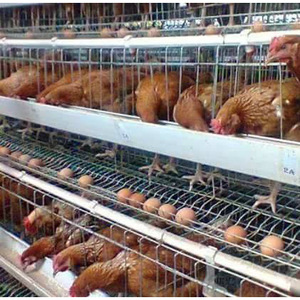Method for reducing waste of chicken feed
- font size
- Be the first to comment!
When farmers raise chickens, the purchase of chicken feed is also a small economic investment. Today, poultry farming equipment manufacturers start from the fundamental interests of farmers, and introduce farmers to several ways to reduce feed waste, thus saving farmers a portion of the economic cost of feed.
1. Feed full-price compound feed. Many farmers often use a single feed to feed chickens. Because of their single nutrition, they often eat more food, produce less, have smaller eggs, and have lower feed returns. Therefore, full-price compound feed should be used in production.
2. Raising high-yielding laying hens. At present, there are still many farmers in the rural areas to raise soil breeders. Although these chickens have strong disease resistance, they often eat more food and produce less eggs, which inevitably causes waste of feed.

3. Turn free range into chicken layer battery cage farming. The range of free-range chickens is large, the chicken body consumes a lot of material, and the feed is wasted. When it is changed to cage, it can reduce a lot of unnecessary feed waste.
4. The inside of the trough should be edged. The side of the trough can prevent the chicken from feeding out during the feeding process, which can effectively reduce feed waste.
5. Reduce materials in time. When the laying hens have peaked in egg production, they should be reduced in time. The method is: according to the chicken day, reduce the amount of 2.5 grams, observe 3-4 days, to see if the drop in egg production rate is normal. If it is normal, it can be reduced by 1-2 grams per day. If there is still no abnormality, it can be dropped by another three grams. This will not affect the production of eggs, but also prevent the body from being over-fertilized, which can ensure the supply of nutrients and reduce the waste of feed.
6. Eliminate low-yield chickens in time. Timely elimination of low-yield chickens can effectively save feed. In production, the first is to timely eliminate low-yield chickens that have not been opened or have been produced for 30-35 weeks of age, but have a short egg production period. Second, they must eliminate chickens that are often closed, overweight or overweight. Small and thin chickens, chickens with severe cockroaches; Third, chickens with poor growth, disability, weak chickens, strong nesting and early maturity during the whole group.
The above is a way to save money for farmers during the use of equipment in large poultry farms. I hope I can help you.


